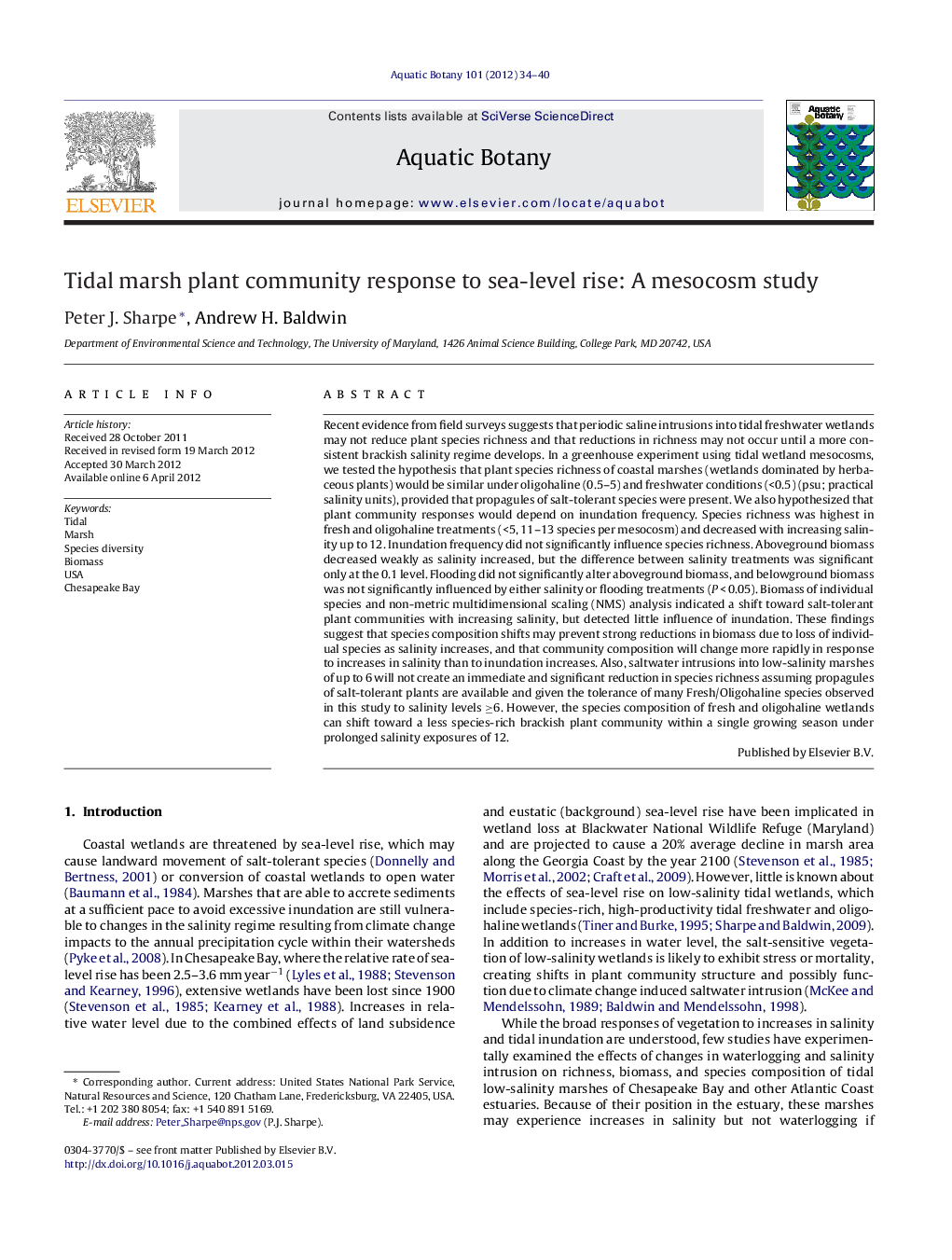| کد مقاله | کد نشریه | سال انتشار | مقاله انگلیسی | نسخه تمام متن |
|---|---|---|---|---|
| 4528019 | 1625841 | 2012 | 7 صفحه PDF | دانلود رایگان |

Recent evidence from field surveys suggests that periodic saline intrusions into tidal freshwater wetlands may not reduce plant species richness and that reductions in richness may not occur until a more consistent brackish salinity regime develops. In a greenhouse experiment using tidal wetland mesocosms, we tested the hypothesis that plant species richness of coastal marshes (wetlands dominated by herbaceous plants) would be similar under oligohaline (0.5–5) and freshwater conditions (<0.5) (psu; practical salinity units), provided that propagules of salt-tolerant species were present. We also hypothesized that plant community responses would depend on inundation frequency. Species richness was highest in fresh and oligohaline treatments (<5, 11–13 species per mesocosm) and decreased with increasing salinity up to 12. Inundation frequency did not significantly influence species richness. Aboveground biomass decreased weakly as salinity increased, but the difference between salinity treatments was significant only at the 0.1 level. Flooding did not significantly alter aboveground biomass, and belowground biomass was not significantly influenced by either salinity or flooding treatments (P < 0.05). Biomass of individual species and non-metric multidimensional scaling (NMS) analysis indicated a shift toward salt-tolerant plant communities with increasing salinity, but detected little influence of inundation. These findings suggest that species composition shifts may prevent strong reductions in biomass due to loss of individual species as salinity increases, and that community composition will change more rapidly in response to increases in salinity than to inundation increases. Also, saltwater intrusions into low-salinity marshes of up to 6 will not create an immediate and significant reduction in species richness assuming propagules of salt-tolerant plants are available and given the tolerance of many Fresh/Oligohaline species observed in this study to salinity levels ≥6. However, the species composition of fresh and oligohaline wetlands can shift toward a less species-rich brackish plant community within a single growing season under prolonged salinity exposures of 12.
Figure optionsDownload as PowerPoint slideHighlights
► Salinity increases to 12 psu significantly reduced plant species richness.
► No significant reduction in species richness for the 0–6 psu salinity treatments.
► Increased salinity had the strongest immediate impact versus flooding treatments.
► Mesocosm community biomass was resilient to salinity and flooding treatments.
Journal: Aquatic Botany - Volume 101, August 2012, Pages 34–40